Introduction
Chinese Poached Chicken, known as Bái Zhǎn Jī (白斩鸡), is a dish that embodies the essence of minimalist cooking. Rooted in China’s culinary history, this dish prioritizes simplicity, freshness, and the natural flavors of its ingredients. Often hailed as a symbol of Cantonese cuisine, it has transcended regional boundaries to become a beloved staple across China and beyond. At its core, the dish features a whole chicken poached to tender perfection, served with a fragrant dipping sauce. Yet, beneath its unassuming appearance lies a rich tapestry of cultural significance, culinary precision, and time-honored techniques. This article explores the history, preparation, cultural variations, and enduring appeal of Chinese Poached Chicken, offering insight into why it remains a cherished icon of Chinese gastronomy.
A Historical Tapestry: Origins and Evolution
The origins of Chinese Poached Chicken trace back to the Qing Dynasty (1644–1912), where it emerged as a hallmark of Guangdong province’s culinary prowess. Cantonese chefs, renowned for their emphasis on preserving ingredients’ innate flavors, pioneered the technique of poaching chicken in simmering water—a method that requires meticulous attention to temperature and timing. Unlike bold, spicy dishes, this preparation celebrates subtlety, aligning with the Cantonese philosophy that “the best taste is the original taste.”
Historical records suggest the dish gained prominence during festivals and imperial banquets, where its pristine appearance and delicate texture symbolized purity and prosperity. Over centuries, it evolved from a luxury for the elite to a household favorite, adapted by families seeking to honor tradition while savoring nature’s bounty. Today, it remains a centerpiece of Lunar New Year feasts, weddings, and family reunions, serving as both a culinary delight and a cultural emblem.
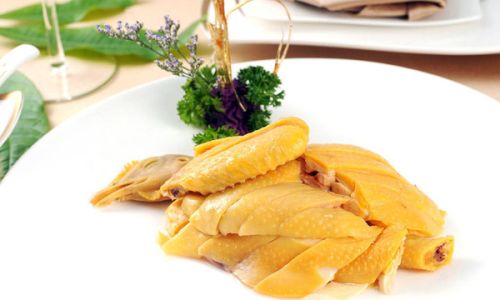
The Anatomy of Perfection: Ingredients and Selection
At the heart of Chinese Poached Chicken lies the quality of its primary ingredient: the chicken. Traditional recipes demand a fresh, free-range bird, preferably a “San Huang Ji” (三黄鸡), a breed prized for its golden skin, tender meat, and subtle flavor. Farmers raise these chickens on a diet of grains and insects, resulting in lean, firm flesh with minimal fat—a stark contrast to the marbled meat of Western poultry. The chicken’s age and size are equally critical; younger birds (around 3–4 months old) are preferred for their delicate texture, while older ones may yield tougher meat.
Beyond the chicken, the dish’s dipping sauce—a harmonious blend of ginger, scallions, soy sauce, and peanut oil—elevates its simplicity. Freshness is non-negotiable: ginger should be young and fibrous, scallions crisp, and soy sauce artisanal. Some variations incorporate cilantro, sesame oil, or chili flakes, reflecting regional preferences. The sauce’s role is twofold—to complement the chicken’s mild flavor and to awaken the palate with aromatic punches.
The Poaching Technique: Science Meets Art
The poaching method is a masterclass in culinary precision. Unlike boiling, which subjects ingredients to rolling turbulence, poaching involves submerging the chicken in water heated to a gentle simmer (around 85–90°C or 185–194°F). This low-and-slow approach ensures even cooking without toughening the meat. The process unfolds in three stages:
- Blanching: The chicken is briefly immersed in boiling water to tighten the skin, sealing in juices and creating a velvety texture.
- Resting: The bird is transferred to a simmering pot, where it cooks gradually for 20–30 minutes, depending on size.
- Chilling: An ice bath halts cooking, preventing overdoneness and enhancing the meat’s tenderness.
Mastering these steps requires patience. Overcooking results in dry, stringy meat, while undercooking leaves the flesh raw and unappetizing. Chefs often test doneness by piercing the thigh with a skewer; clear juices indicate readiness.
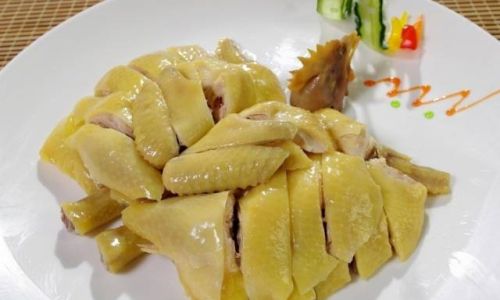
The Dipping Sauce: A Symphony of Flavors
While the chicken itself is a study in restraint, the dipping sauce injects vibrancy. Traditional recipes call for:
- Ginger: Finely julienned, it imparts a peppery warmth.
- Scallions: Sliced into thin rings, they offer a fresh, grassy note.
- Soy Sauce: A high-quality, light variety balances saltiness and umami.
- Peanut Oil: Toasted to coax out nuttiness, it binds the ingredients.
The sauce is typically prepared by sautéing ginger and scallions in hot oil until fragrant, then mixing them with soy sauce. Some variations substitute peanut oil with sesame oil for depth or add a touch of sugar to balance bitterness. In Shanghai, cooks might include vinegar for a tangy kick, while Sichuanese adaptations feature chili oil for heat.
Presentation and Serving Rituals
Chinese Poached Chicken is as much a visual delight as a gastronomic one. The bird is often chopped into bite-sized pieces, arranged on a platter with garnishes like cilantro sprigs, cucumber slices, or tomato wedges. The golden skin, glossy from the ice bath, contrasts beautifully with the white meat, creating an appetizing tableau.
Serving rituals vary by region. In Guangdong, diners dip chicken pieces into individual bowls of sauce, ensuring everyone enjoys a personalized balance of flavors. In contrast, northern China might present the sauce as a communal dish, passed around the table. Regardless of style, the act of sharing underscores the dish’s communal spirit.
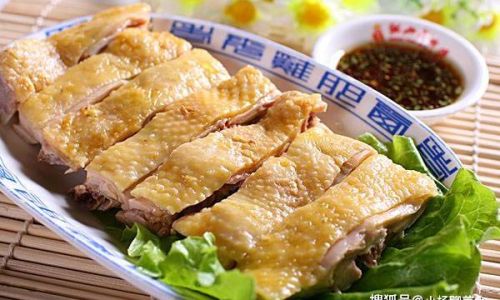
Health and Nutritional Benefits
Beyond its cultural significance, Chinese Poached Chicken is a nutritional powerhouse. A 100-gram serving provides approximately 165 calories, 31 grams of protein, and minimal fat—making it ideal for health-conscious eaters. The poaching method preserves nutrients often lost in frying or roasting, while the absence of heavy sauces keeps sodium and calories in check.
Ginger, a key component of the dipping sauce, boasts anti-inflammatory properties and aids digestion, transforming the sauce from a mere condiment into a functional element of the meal.
Cultural Variations: From Guangdong to Global Kitchens
While Cantonese-style Poached Chicken remains the gold standard, regional adaptations showcase China’s culinary diversity:
- Shanghai: Here, the sauce leans sweeter, with additions of rock sugar and aged vinegar. Some cooks marinate the chicken in Shaoxing wine for depth.
- Sichuan: Chili oil and Sichuan peppercorns inject fiery complexity, appealing to those who crave heat.
- Taiwan: A fusion twist sometimes incorporates basil or lime for a tropical flair.
Beyond China, overseas Chinese communities have embraced the dish, introducing it to global audiences. In Southeast Asia, for example, cooks might add lemongrass or galangal to the poaching liquid, infusing it with local flavors.
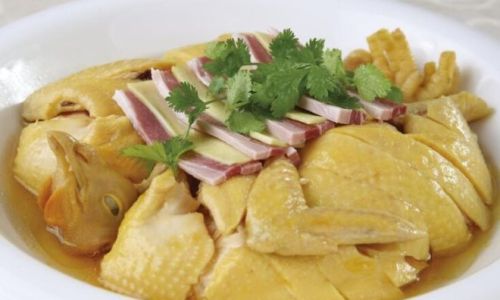
Modern Revival: From Street Food to Fine Dining
In recent years, Chinese Poached Chicken has experienced a resurgence in popularity, driven by a renewed interest in traditional cooking and health-conscious eating. Food bloggers and chefs alike champion its simplicity, with some elevating it to haute cuisine.
In Hong Kong, Michelin-starred restaurants serve the dish with gourmet touches like truffle-infused soy sauce or edible gold leaf. Meanwhile, street vendors in Guangzhou continue to dish out affordable, no-frills versions, proving the dish’s versatility.
The Philosophical Underpinnings: Simplicity as Virtue
Chinese Poached Chicken reflects broader philosophical ideals deeply embedded in Chinese culture. The Confucian emphasis on harmony and balance is evident in the dish’s components: the chicken’s mildness harmonizes with the sauce’s assertiveness, while the cooking method marries fire and water—two opposing elements in Taoist cosmology.
Moreover, the dish embodies the Daoist principle of wu wei (effortless action). While its preparation demands precision, the end result appears deceptively simple, as though achieved without struggle. This paradox mirrors life’s lessons: mastery lies in understanding when to act and when to yield.
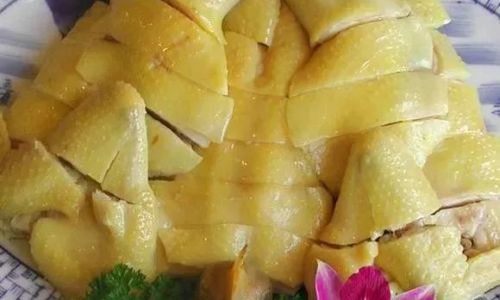
Conclusion: A Timeless Legacy
Chinese Poached Chicken is more than a dish—it’s a narrative etched in flavor. From its humble origins in Guangdong to its global presence today, it encapsulates China’s culinary heritage: a celebration of tradition, a testament to simplicity, and a bridge between past and present. Whether enjoyed at a banquet hall or a family kitchen table, it invites diners to savor not just the chicken, but the stories, techniques, and cultures that have shaped it. In an era of culinary excess, this poached masterpiece reminds us that sometimes, the purest pleasures are found in letting ingredients speak for themselves.
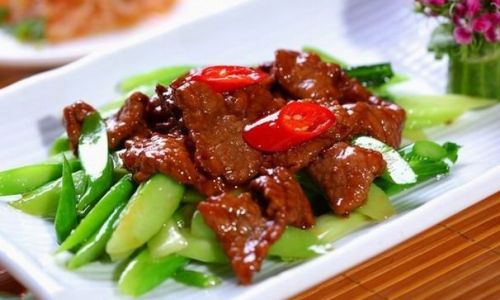
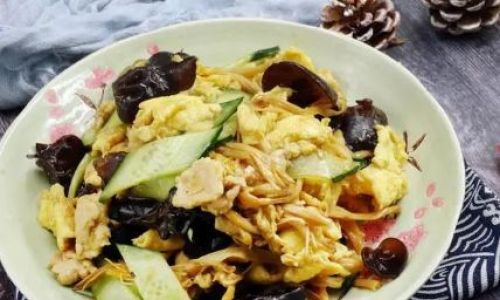
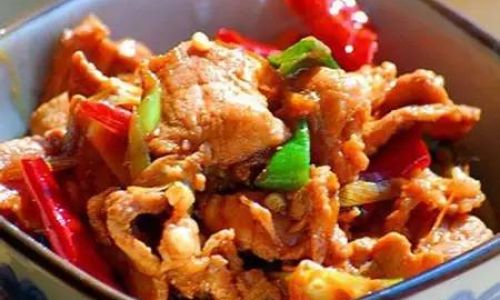

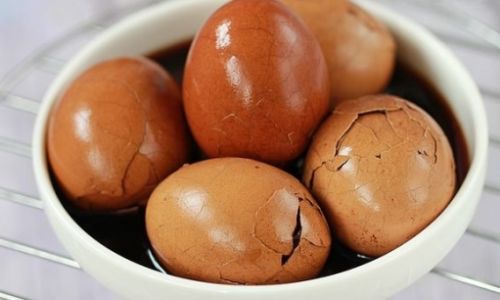

0 comments